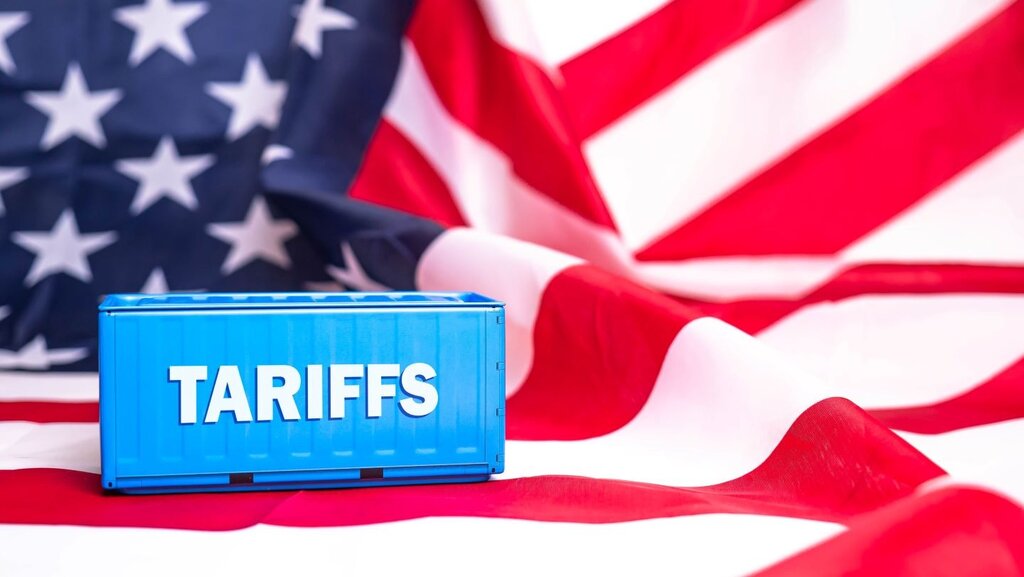
If prices of devices are driven up by tariffs, hospitals will either face shrinking profit margins or pass on the cost to patients. Credit: Tama2u / Shutterstock
With the surge in tariffs imposed by and on the US, the medical devices industry is likely to be impacted in several areas, including cost, supply chain, and market competitiveness. Healthcare facilities may stock up on medical devices to prepare for increased pricing if they have the budget, says GlobalData, a leading data and analytics company.
According to GlobalData’s US Healthcare Facility Invoicing Database, across 56 tracked medical device markets, the top 20 facilities as of March 2025 have spent an average of 6.7% more in April. This increase doesn’t appear to be attributed to specific markets—across most covered markets, some facilities increased their spend in April, while others decreased their spend.
Necessary procedures, such as aspiration thrombectomies, will need to continue being done, whereas elective procedures such as hip reconstruction can be delayed. If prices of devices are driven up by tariffs, hospitals will either face shrinking profit margins or pass on the cost to patients, and patients might not be able to afford the increased procedure costs.
The top facilities have already spent more on hip reconstruction devices, with an 18% jump in the average amount spent by facilities from this March to April, compared to a 3% decline last March to April. Similarly, the top facilities are spending more on knee reconstruction devices. From March to April this year, there has been a 9% increase in the average spend, compared to a 13% dip from March to April last year.
Looking at aspiration thrombectomy, from March to April 2024, there was a decline of 30% in purchasing. Consistently, the March to April period this year also saw a decline of 30%. This suggests that the top facilities have not been stocking up on aspiration thrombectomy devices despite tariffs.
GlobalData expects a continued steady purchasing of devices for necessary procedures, while purchases of devices for elective procedures, such as hip and knee reconstruction, may slow if facilities have already purchased supplies in advance. If tariffs continue, manufacturing sites could move into the US to avoid tariffs for both consumers and manufacturers.
Navigate the shifting tariff landscape with real-time data and market-leading analysis. Request a free demo for GlobalData’s Strategic Intelligence here.
2024 biotech round-up
Taking top spot in biotech IPOs this year is CG Oncology – the cancer drug specialist raised $380m when it hit the NASDAQ trading boards in January. This increased to $437m at IPO close after the underwriters exercised the option to purchase additional shares.
Funds raised are going towards CG’s lead asset, cretostimogene grendenorepevec, an oncolytic virus immunotherapy, which is in development for the treatment of high-grade non-muscle invasive bladder cancer (NMIBC) and muscle-invasive bladder cancer.
GlobalData’s business fundamentals senior analyst Ophelia Chan says: “Oncology continued to dominate as the leading therapeutic area for IPOs this year, highlighted by CG Oncology’s $437m upsized IPO—the largest and first of the year. The company’s robust clinical data and ability to secure substantial capital have contributed to its strong performance in 2024.”
After a quiet summer, the IPO market reached full swing in autumn when Bicara Therapeutics, Zenas BioPharma, and MBX Biosciences all opened on the NASDAQ on the same Friday in September. The ‘triple-header event’ saw the three companies pull in over $700m combined. It was no surprise that the surge in activity came after the Federal Reserve’s decision to lower interest rates for the first time in years, ushering in a more inviting funding environment. This fruitful month was a stark contrast to August, which saw a significant global stock market dip amid fears of a US recession.
In June, Telix Pharmaceuticals – an emerging player in the fast-growing radiopharmaceutical space – pulled a last-minute plug on its IPO. The Australian company had been planning to list on NASDAQ and was on course to raise $232m – a value that would have placed it high on the list of biotech IPO sizes this year. Telix cited that its board did not move forward with the plans due to market conditions at the time.

On The Ground International assists Venezuelan caminantes (pictured) between Pamplona and La Laguna, Santander, Colombia. Credit: On The Ground International / Facebook

The Smart Clinic in La Guajira, Colombia. Credit: Siemens Healthineers
Numb feet, bleeding legs and dehydrated bodies mark their journeys – not to mention infectious diseases and psychological trauma. Studies have identified outbreaks of measles, diphtheria and malaria across Venezuela, while tuberculosis, typhoid and HIV, are also resurgent.
Caption. Credit:
Once we see where those changes are, we can plan where we’re going to cut the bone.
Dr Lattanza

Phillip Day. Credit: Scotgold Resources
Total annual production
Australia could be one of the main beneficiaries of this dramatic increase in demand, where private companies and local governments alike are eager to expand the country’s nascent rare earths production. In 2021, Australia produced the fourth-most rare earths in the world. It’s total annual production of 19,958 tonnes remains significantly less than the mammoth 152,407 tonnes produced by China, but a dramatic improvement over the 1,995 tonnes produced domestically in 2011.
The dominance of China in the rare earths space has also encouraged other countries, notably the US, to look further afield for rare earth deposits to diversify their supply of the increasingly vital minerals. With the US eager to ringfence rare earth production within its allies as part of the Inflation Reduction Act, including potentially allowing the Department of Defense to invest in Australian rare earths, there could be an unexpected windfall for Australian rare earths producers.
